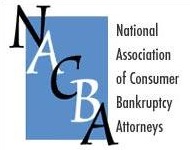 Vital information lurks in the debtor’s tax return. Are you flushing that information out and incorporating those nuggets in the petition, or are you content to wait for the trustee to confront your client in public at the 341 meeting with the inconsistency?
Vital information lurks in the debtor’s tax return. Are you flushing that information out and incorporating those nuggets in the petition, or are you content to wait for the trustee to confront your client in public at the 341 meeting with the inconsistency?
Ten things you might find in the return:
- Dependents– how does the list of tax dependents compare to the current household size
- Wage income– how does it relate to the CMI, Schedule I, and SOFA question 1
- Dividend income – have you accounted for the stock, or the disposition of the stock
- Social Security – does it appear on SOFA question 2
- Retirement income– is it accounted for in the SOFA
- Income property– does Schedule E show rental property and have you scheduled the asset
- Partnerships– have you listed partners as co debtors and any fictitious business names on the petition
- Businesses- are the assets accounted for in the schedules and in SOFA question 18
- Business expenses– compare with B-22, Schedule J, and plan for ongoing business operation
- Tax burden– are there taxes due or a refund- does tax deduction on B-22 correlate to return
This is real life, so there is no reason to assume that the situation when you are ready to file is necessarily unchanged from the last tax return. But you need to consider whether you understand where the numbers are different and why that is. Make notes so you can explain the changes to the trustee who will have the same questions if your schedules don’t fill in the gaps.
You have to provide the tax return to the trustee. It behooves you to to have read the return in your file and to have considered the information as it colors the bankruptcy petition.
Image courtesy of HGruber & Flickr








Good start.
1040 Check Sch A interest expense….provides how much interest is paid VERSUS actual payment on bk sch J. this gives some idea about equity.
1040 Sch A. taxes paid gives an idea of property valuation. In Calif property taxes at about 1% so
assessed value can be extrapolated.
1040 sch C. business expense provides much info about business both income and epxenses and
phantom income or depreciation and again HOW MUCH PROPERTY and its tax basis/value
John Lenderman